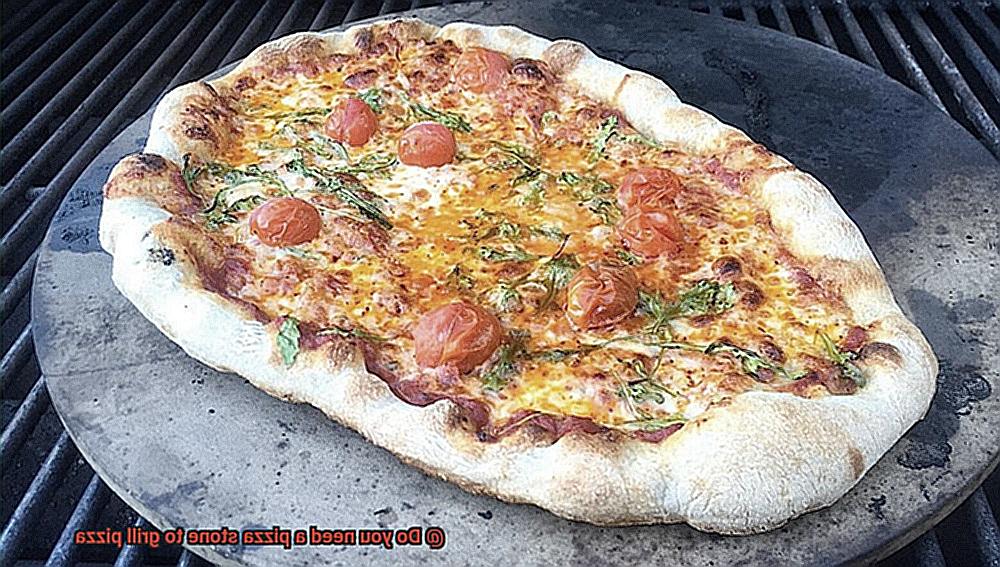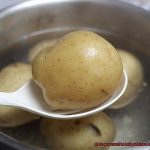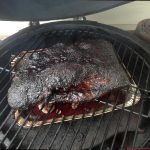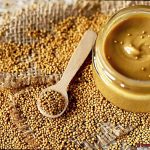Summer is here, and that means it’s time to fire up the grill and enjoy some delicious outdoor cooking. And what better way to satisfy your cravings than with a hot, fresh-off-the-grill pizza? But before you start prepping your ingredients, you may be wondering: do you really need a pizza stone to grill pizza?
Well, the truth is that while a pizza stone can help create a crispy crust and evenly cooked toppings when baking pizzas in the oven, it’s not always necessary for grilling. In fact, grilling your pizza can add a delightful smoky flavor and a charred, slightly crunchy crust that simply can’t be replicated in an oven.
But don’t go slapping dough on the grill just yet. There are some important things to keep in mind if you want to achieve grilled pizza perfection without a pizza stone. In this blog post, we’ll explore everything from tips for getting the perfect crust to how to prevent your toppings from burning. We’ll even cover alternative tools you can use in place of a pizza stone.
So get ready to impress your friends and family with an incredible homemade grilled pizza – no fancy equipment required. Just dust off your trusty grill and follow our expert advice for mouth-watering results that will have everyone begging for seconds.
Contents
Benefits of Using a Pizza Stone for Grilling Pizza
Grilling pizza is a culinary adventure that requires attention to detail and precision. A pizza stone can be your secret weapon in achieving that perfect crispy crust. Using a pizza stone for grilling pizza has become increasingly popular among pizza enthusiasts, and for good reason. Let’s explore the many benefits of using a pizza stone for grilling pizza.
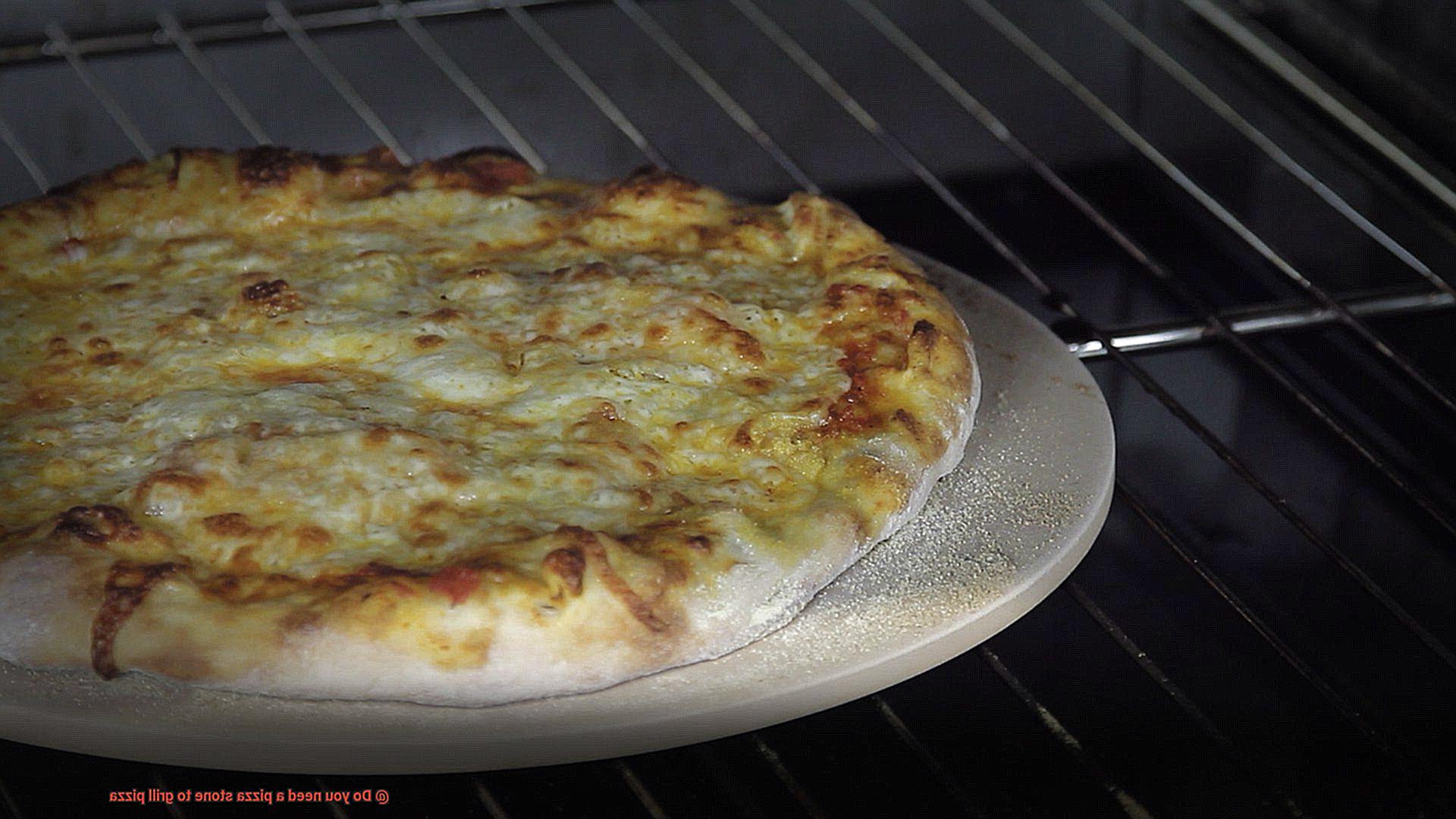
Firstly, even heat distribution is critical for cooking the pizza evenly. A pizza stone absorbs heat from the grill and then releases it slowly and uniformly, ensuring that your pizza cooks thoroughly and consistently. No more undercooked or overcooked areas on your pizza. The result is a perfectly cooked pizza every time, with a crispy crust and gooey toppings.
Secondly, using a pizza stone can help prevent the dough from sticking to the grill grates. Placing raw dough directly onto grill grates can lead to uneven crusts caused by tears and sticking. By using a pizza stone, you eliminate this problem, as the stone provides a non-stick surface for the dough to rest on while it cooks. This also helps to ensure an even crust that’s lightly charred and crispy.
Thirdly, a pizza stone can help create a crispy crust. The porous nature of the stone allows moisture from the dough to escape quickly, resulting in a crispier crust. This is because moisture on the surface of the crust can make it soggy, but with a pizza stone, this is not an issue. You’ll enjoy that satisfying crunch with every bite.
Finally, using a pizza stone can reduce cooking time. The stone absorbs heat quickly and retains it well, meaning that your pizza will cook faster than if you were cooking it directly on the grill grates. This feature is especially useful when cooking multiple pizzas in quick succession. You’ll be able to keep up with the demand and impress your guests with your speedy cooking skills.
In conclusion, if you’re serious about grilling pizza, investing in a high-quality pizza stone is definitely worth considering. It provides even heat distribution, prevents sticking, creates a crispy crust, and reduces cooking time. However, there are other methods you can use to achieve similar results without a pizza stone. For example, preheating your grill and placing the pizza directly on the grates or using a cast iron skillet on the grill can also create a similar effect by allowing the heat to circulate around the pizza and create a crispy crust.
Alternatives to Using a Pizza Stone
As an expert in all things pizza, I’m here to tell you that there are several alternatives to using a pizza stone that can produce similarly delicious results.
First on the list is the trusty cast iron skillet or griddle. These versatile tools can be used on the grill to create a crispy crust and evenly cooked toppings. Start by preheating your skillet or griddle on the grill, then transfer your prepared pizza onto it. The cast iron will retain heat and distribute it evenly, resulting in a perfectly crispy crust.
Another great option is a perforated pizza pan. These pans have small holes in the bottom that allow air to circulate, creating a crispy crust. Preheat the pan on the grill, add your pizza, and let it cook until the crust is golden brown and the cheese is melted.
But what if you don’t have either of these options? No problem. You can still grill pizza directly on your grill grates. Just remember to preheat your grill on high for at least 10 minutes before adding the pizza. Brush the grates with oil to prevent sticking, then add your prepared pizza directly onto the grates. Cook for a few minutes on each side until the crust is crispy and charred.
Preheating the Grill for Perfectly Grilled Pizza
To achieve the perfect grilled pizza, there’s one critical step that you can’t afford to miss – preheating your grill. As an expert in this field, I’m here to guide you through the essential tips and tricks that will ensure your pizzas come out hot, crispy, and utterly delicious.
Firstly, let’s address a common question – do you need a pizza stone? While it’s not necessary, using a pizza stone can be helpful in achieving consistent temperatures and preventing your dough from sticking to the grill grates. However, if you don’t have one, no need to fret. You can still make fantastic grilled pizza.
Now, onto the preheating process itself. Start by turning all the burners on high and closing the lid. Let it heat up for at least 10-15 minutes before placing your pizza on it. This step ensures that your grill grates are hot enough to create a crispy crust that will leave your taste buds dancing with joy.
If you’re using a pizza stone, place it on the grill grates as the grill heats up. Once it reaches the desired temperature, you can place your pizza directly on it. If not, make sure to oil your grill grates well before placing the dough on them to prevent sticking.
Remember to keep an eye on the temperature of your grill while cooking. If it starts to get too hot, turn down the burners or move your pizza to a cooler part of the grill. Conversely, if it’s not getting hot enough, adjust the burners or add more fuel.
In summary, preheating your grill is non-negotiable when it comes to creating mouth-watering grilled pizzas. To achieve consistent results without a pizza stone, oil your grill grates well before placing the dough. And don’t forget to monitor the temperature as you cook to ensure that your pizza is cooked to perfection.
Placing the Pizza Directly on the Grates
Take your pizza game up a notch by placing it directly on the grates of your grill. This popular method is perfect for those without a pizza stone or anyone looking to try something new. But before you begin, there are some important things to keep in mind.
First and foremost, preheat your grill to a high temperature. This is crucial for ensuring that your pizza cooks evenly without burning or sticking to the grates. Make sure those burners are cranked up and the grill is nice and hot before you start.
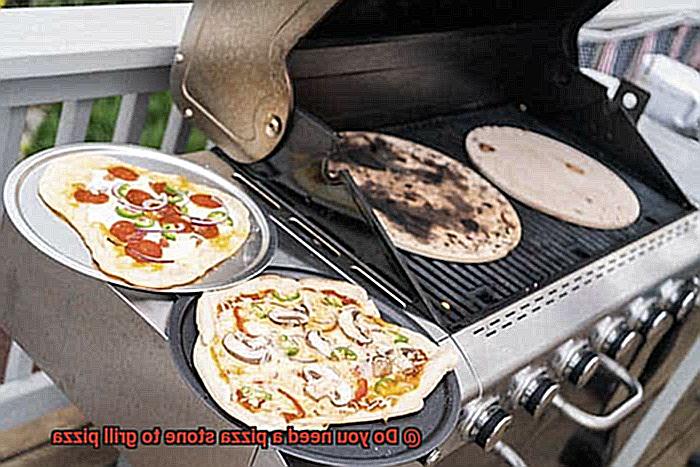
Next, don’t forget to oil those grates. This simple step is essential for preventing your dough from sticking and making it easier to remove your pizza once it’s cooked. Just a light coating of oil will do the trick.
When it comes to the type of dough you use, thinner is better for this method. Thicker doughs require longer cooking times, which can increase the risk of burning or sticking. So opt for a nice thin crust for the best results.
Another important factor to consider is your toppings. While it can be tempting to load up your pizza with all sorts of goodies, too many toppings can make your pizza too heavy and difficult to handle. Keep it simple and add toppings sparingly to avoid any mishaps.
Utilizing a Cast Iron Skillet for Optimal Results
This versatile kitchen tool is perfect for grilling pizza and achieving optimal results.
One of the key advantages of using a cast iron skillet is its ability to distribute heat evenly. This means that each slice of your pizza will be cooked to perfection, with no cold spots or burnt edges. Plus, the skillet’s ability to retain heat will keep your pizza warm long after it comes off the grill.
But the benefits of a cast iron skillet don’t stop there. Unlike a pizza stone, which is limited to one use, a cast iron skillet can be used for a variety of cooking methods. From searing steaks to making pancakes, this tool is a true workhorse in the kitchen.
Of course, using a cast iron skillet for pizza may result in a slightly different texture and taste compared to using a pizza stone. The crust may not be as crispy, but that doesn’t mean it won’t be delicious. Plus, the rustic appearance of the finished product adds to its charm.
So how do you use a cast iron skillet for grilling pizza? It’s easy. Simply preheat the skillet on the grill with the lid closed. Once it’s hot, add your pizza dough and toppings and keep an eye on it, rotating occasionally to ensure even cooking.
Tips for Achieving Crispy Crusts Without a Pizza Stone
Achieving that perfect crust on the grill is possible with these tips and tricks.
Tip 1: Start with the right dough.
A high gluten content dough or adding cornmeal/semolina flour to the bottom of the dough can create that desired crispy texture.
Tip 2: Preheat your grill to a high temperature of around 500-600 degrees Fahrenheit.
This high heat will help cook the dough quickly and create that crispy texture.
Tip 3: Prevent sticking by lightly oiling the grates or using parchment paper.
You can also use a perforated pizza pan/tray specifically designed for grilling pizza.
Tip 4: Be mindful of your toppings.
Too many toppings or too much sauce can make the crust soggy. Stick to lighter toppings and less sauce for a crispier crust.
Tip 5: Let your grilled pizza cool for a few minutes before cutting into it.
This allows the cheese and toppings to set, preventing them from sliding off and creating a mess.
Personal Preferences and Cooking Style Considerations
Before you start, it’s crucial to consider your personal preferences and cooking style. The equipment you use can make all the difference in achieving your ideal pizza.
When it comes to crust, do you prefer a crispy or soft texture? If you crave that satisfying crunch, then a pizza stone might be your go-to choice. The porous surface of a pizza stone absorbs moisture from the dough, resulting in an evenly cooked and crispy crust. However, if you don’t have time for extra prep work or enjoy a softer crust, then using a pizza pan or grilling basket could be more suitable for you since they are quicker to heat up.
Your cooking style is another factor to consider. Do you love to experiment with various toppings and flavors? If so, using a pizza stone may offer more flexibility. The porous surface of the stone allows for better airflow and even cooking, making it perfect for pizzas loaded with toppings.
Ultimately, your personal preferences should guide your decision-making process. Some people swear by the benefits of using a pizza stone, while others prefer the convenience of using a pan or basket. Experiment with different methods to find what works best for you and your taste buds.
Remember these tips for grilling the perfect pizza: start with the right dough, preheat your grill to a high temperature, use parchment paper or lightly oiled grates to prevent sticking, avoid adding too many toppings, and let your masterpiece cool before cutting into it.
zgCvbDfIOuE” >
Conclusion
In conclusion, grilling pizza is a mouth-watering way to savor the summer season. While a pizza stone can be a useful tool for achieving crispy crust and evenly cooked toppings when baking pizzas in the oven, it’s not always necessary for grilling. Instead, grilling your pizza can infuse it with a delightful smoky flavor and create a charred, slightly crunchy crust that cannot be replicated in an oven.
However, if you want to achieve grilled pizza perfection without a pizza stone, there are some key things to keep in mind. Preheating your grill to a high temperature is essential for ensuring that your pizza cooks evenly without burning or sticking to the grates. Additionally, using alternative tools like cast iron skillets or perforated pizza pans/trays can create similar effects as using a pizza stone.
To achieve that perfect crust on the grill, start with the right dough and preheat your grill to around 500-600 degrees Fahrenheit. Prevent sticking by lightly oiling the grates or using parchment paper. Be mindful of your toppings and let your grilled pizza cool for a few minutes before cutting into it.
Ultimately, personal preferences should guide your decision-making process when it comes to choosing equipment and cooking style.

